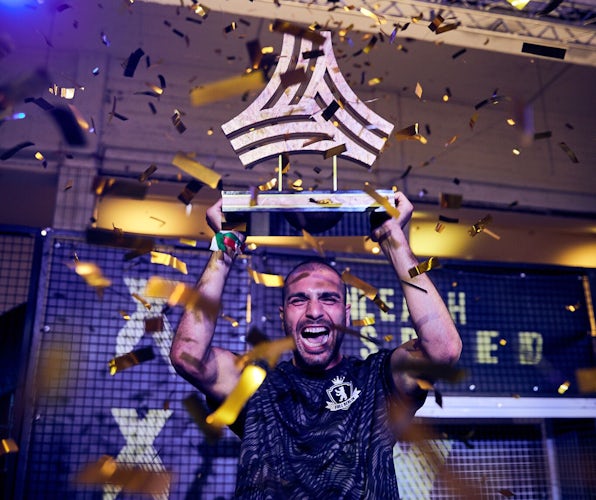Starbucks explores dark social for market research
The coffee giant is trying to bring its marketing and product development closer together so it can jump on trends faster and get better insight on what resonates.

Starbucks is exploring how it can use private groups and accounts on social media to better engage with consumers around product development and testing as it looks to evolve its social media strategy.
Speaking at an event held yesterday (13 March) by social media consultancy The Social Element, Reuben Arnold, Starbucks’ vice-president of marketing and product in EMEA, said the moves are helping it have “deeper conversations” with some customers and bring product and marketing closer together.
“What I’m most excited about [on social media] is some of the possibilities around private groups and private accounts on social media channels,” he said. “When we think about the crossover between product and marketing, it really allows us to have a much deeper conversation with certain customers who really do care about our brand, who can then get much more involved in things like product development and testing, and we can use the audience in a much more meaningful way.”
The groups are mostly on Facebook at the moment, although Arnold told Marketing Week Instagram is also “starting to take shape”. And while they won’t replace more traditional market research practices, Starbucks hopes this can offer a more natural way of engaging and enable it to go deeper with consumers.
“Because I look after marketing and product, that really is quite an exciting opportunity,” he explained. “Like a lot of brands, we use trend analysis but social is a great channel to look at where those trends are starting to gain traction. Then through our own audiences it’s about how we create a highly engaged audience.
The crossover between product and marketing allows us to have a much deeper conversation with customers who really do care about our brand, who can then get much more involved in things like product development.
Reuben Arnold, Starbucks
“We do that with online panels but [that] is a less natural way for people to communicate and it’s not so interactive. You can do conjoint analysis on an online panel but I find that when it’s in more of a conversational environment, it allows us to be more dynamic with our questioning and explore what resonates.”
Starbucks is also using social media to listen not just to what customers are saying about the brand and its products but also trends in the market. For example, with dairy-free alternatives, social media allowed Starbucks to see that the conversation was shifting from a focus around intolerance to one around health and wellness, and then taste.
“That really helped us think, we need to get ahead of this, particularly given some of our development timelines,” he said, adding: “Listening outside our own channels is important.”
READ MORE: How marketing is fuelling the ‘post-milk generation’
Measuring the ROI of social
While investment in social media advertising is increasing, up to 13.8% of marketers’ overall budgets according to the latest CMO Survey, marketers are struggling to measure its impact. Just a quarter (24.7%) of marketers say they can prove the impact of social activity quantitatively, while 39.3% say they are unable to show any impact at all.
Yet Starbucks won a silver IPA Effectiveness award last year for its social media strategy, which it calculates returned almost £4 in additional profit for every £1 spent.
READ MORE: How brands are looking to prove the ROI of social
“What we were trying to demonstrate is that as a brand it’s about building an audience and building a connection,” said Arnold. “It wasn’t just a one-off big campaign, it was about building a connection with a particular segment audience and then doing interesting and different things each year to continue to engage with that audience and grow that audience base.”
Starbucks uses econometrics in its more mature markets, including the UK, to judge success, saying it can see a “very direct correlation” between social media activity and footfall in-store and ladder that up to how many products it sold versus how much was invested.
It also measures brand equity through measures such as follower counts in new markets, and sentiment and engagement in more mature ones. Key, said Arnold, it to set very clear KPIs by market and being focused on who is being targeted.
“When we launch in a new market like Italy or South Africa, followers is quite an interesting link to brand awareness and brand affinity, whereas somewhere like the UK it’s going to be much more about things like mentions, sentiment, engagement,” he commented.
“The answer is setting very clear KPIs by market and being very clear on who it is you are trying to target, rather than having broad or general metrics around how many likes, shares or follows.”
Staying in control of social media
The scale of social media can make measuring impact difficult. According to a survey of 60 senior marketers by The Social Element, 55% cite a lack of resource versus the size of the challenge as a big concern, while a third are concerned about controlling and engaging with content and 29% feel they have too many channels to manage.
At Starbucks, this challenge is made greater by the fact the EMEA region covers 45 markets, each at different stages of maturity and with different local needs. To manage this, Starbucks uses a combination of guidelines and guidance, providing local social media managers with content in a toolkit format that can be edited, in a controlled way, for local language and relevance.
“Our challenge is, how do we show up as a globally consistent brand but also show up in a market in a relevant way? Given most of our communication will be through digital and social media channels, that comes with a lot of risk as we hand over responsibility for activations in markets that aren’t directly operated by ourselves [but by franchisees],” he said.
“Being clear on what is on-brand but also what is not on-brand is really important.”
Our challenge is, how do we show up as a globally consistent brand but also show up in a market in a relevant way?
Reuben Arnold, Starbucks
For Shell, which was speaking at the same event, holding evaluation sessions is key to ensuring social media is doing the job it is meant to and that ladders up to the business strategy.
“It’s not about having a social media strategy, it’s about having social support your business strategy and what you are trying to do. People often get confused by the two,” said Lee Goodger, social media business strategist at Shell.
“Sometimes there’s an expectation that social should be the answer to everything; it can do many things but it can’t do everything.”
Having a clear strategy, added Tamara Littleton, CEO at The Social Element, can mean brands understand they don’t have to do everything on social and instead focus on what is important to them.
“People think there is a nirvana of all brands should be monitoring everything that’s being said, jumping into the conversation and being witty and doing positive responses, analysing what’s being said, creating amazing content. All of that is really important but you shouldn’t be doing it all the time,” she concluded.
“By having that control that links back into the strategy you can be really clear on when is the best time to create the most compelling content, how do you then engage on the back of that, how you use social listening to identify if that was successful. We need to try and slow down and to do that you need good governance and strategy.”







